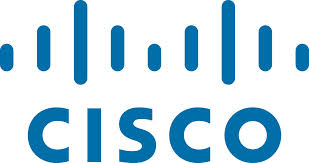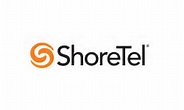Tuesday, June 12, 2012
Customer Experience Management – Burger King or McDonalds?
This is my second post in the current series focusing on
Customer Experience Management - CEM – for the CIO Collaboration Network. As
you may know, I’m writing 3 posts for each series in this ongoing program, with
2 being posted here and 1 directly on the CIO portal. My last post examined the
business value of collaboration to support CEM, and here I’m going to look at
the business case for the same. The differences are subtle but important, and
the business case is about the rationale for having collaborative tools –
namely Unified Communications – to get the most from CEM.
So, why do enterprises need UC for CEM, and what does fast
food have to do with customer service? In terms of the business case, UC is a
fundamental building block for CEM, but this may not be evident yet to contact
center decision makers. UC has been primarily an enterprise-focused solution,
helping employees communicate more effectively within their organization. The
business case there is typically tied to the phone system, especially
end-of-life scenarios. This is a natural trigger event whereby IT must do
something, and increasingly, UC is one of the more appealing options.
There really is no comparable trigger event or driver in the
contact center for UC, and that largely explains why it hasn’t been a top
priority. Instead, the impetus is coming from external forces – changing behaviors
and expectations from customers. Aside from this being a new development, these
changes are not well understood, impossible to control, and difficult to
measure in the context of building a business case. A cardinal rule of business
is that you can only improve what can be measured, so when customer
satisfaction scores start to dip, IT will suddenly get religion about finding
metrics to make the case for UC.
Of course they will only do this if they understand the
broader strategic value of UC and the associated collaboration capabilities it
brings to the contact center. I don’t
need to articulate those benefits here; the CIO Collaboration portal is very rich in such content,
and I’ll leave that to you for further exploration. Building on this strategic
value, the business case for UC becomes easier to define. The drivers are
different here, and management is not thinking about lower telecom costs or
network efficiencies. UC and the contact center is all about the customer, and
as outlined in my last post, this is really about CEM.
While most of the CEM discourse is about managing the
experience, you first need the tools to create that experience, and that’s
where UC comes in. Conventional contact center tools provide a pretty uniform,
predictable and reliable experience, but that just won’t do with today’s
customers. As noted here and elsewhere on this portal, many customers want –
and expect – an interactive, multichannel experience where the phone call is
the starting point of the interaction, rather than the totality. A robust UC
deployment will give agents the tools to roll with whatever comes their way,
and when customers have a good – or great - experience with agents, you can be
certain that all the metrics contact centers live and die by will trend upward.
Case closed.
Have you figured out yet where burgers come into the
discussion? Well, we all know Burger King’s USP – unique sales proposition – “have
it your way”. Like most businesses,
burgers are pretty commoditized, and it’s hard to differentiate from the crowd.
Burger King knows they’ll never be a big as McDonalds, but they deliver a
better customer experience by allowing us to choose our toppings. It only takes
a few seconds to hold the pickle or add extra mayo, but that makes all the
difference for keeping the customer happy – and making sure they come back over
and over again. Clearly, McDonalds customers value other things, but BK has
been holding its own for a long time, and I’m sure their customer satisfaction
metrics validate a loyal base of burger lovers.
Really, is your business any different? Burger King caters
to customers who want a burger on their terms, and that’s why they don’t go to
McDonalds. If your line of business is crowded with lots of similar offerings,
any form of customization can be differentiator. For many companies, customer
service is the best – or even only – way to do this, and if you’re in that
camp, then I’m sure CEM is in your thoughts 24/7. The contact center can be a
gold mine for customization, but only with the right tools, skill set and
management vision. If you have the vision, then the business case for UC should
be self-evident.
The choice to me is pretty simple – do you want CEM to be
like Burger King or McDonalds? Did you
know there are 1,024 ways to have a Whopper? That’s a lot of choice, and wouldn’t
you like your agents to have so many options? The way social media and mobility
is evolving, it won’t be long until your customers think they have this many
choices, and you probably don’t want to find this out after the fact. Bottom
line - collaboration is a highly personal experience, and with UC, CEM can become
a true business driver that goes well beyond what happens in the contact
center. Remember, the customer is always right, and you don’t want to get on
the wrong side of an Angry Whopper experience.
This post sponsored by the CIO Collaboration Network and Avaya
Subscribe to:
Post Comments (Atom)











1 comment:
So informative and comprehensive post.
market report
Post a Comment